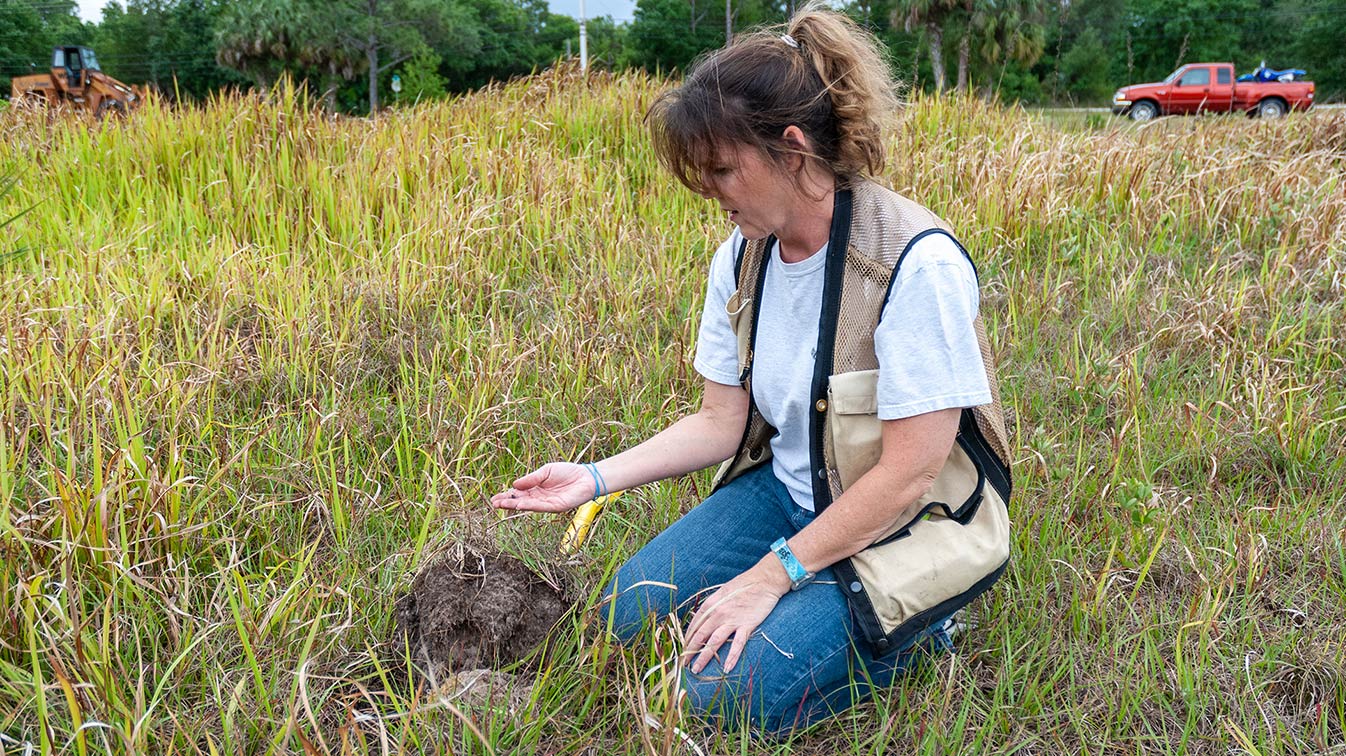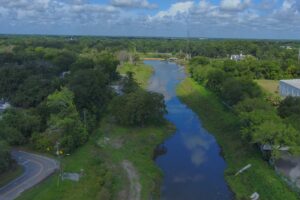Environmental Resource Permitting:
A framework for protecting our water resources and natural systems
One of the core missions of the St. Johns River Water Management District is to ensure the sustainable use of Florida’s water for people and natural systems. It’s a complex and delicate balancing act.
Our regulatory permitting program provides a system of checks and balances to ensure that we’re diligently protecting water resources while simultaneously working with permit applicants to meet our rule criteria.
In 1979 through the early 1980s as Florida witnessed a development boom, the District adopted rules to control flooding. The goal: to ensure that new development wouldn’t adversely affect surrounding, existing properties. For example, the District wanted to make sure that stormwater runoff from a new business’ parking area would not flood a neighboring business in times of heavy rain.
During the same period, the Department of Environmental Regulation, now the Florida Department of Environmental Protection, adopted stormwater rules to address water quality.
Since 1986, the District has been responsible for assuring new development meets water quality as well as water quantity criteria. Our Environmental Resource Permitting Program provides this framework for us to carry out this mission.
This in-depth permitting process falls onto the shoulders of a skilled team of scientists and engineers from the District’s Bureau of Environmental Resource Regulation.
The process starts when an Environmental Resource Permit (ERP) application, consisting of the application, plans, maps and description of the proposed project, has been submitted to the District.
Permitting rules require comments for sufficiency or incomplete items be requested within 30 days, once items are submitted and the application is complete, the District has 60 days to take agency action. After submission, an application is actively under review by staff for an average of 30 days.
“In some cases, the process could take longer depending on the complexity and size of the project,” says Cammie Dewey, District environmental resource program manager, Bureau of Environmental Resource Regulation.
Generally, the first step in the application review process is to send a regulatory scientist to visit the site and inspect the area that will be affected by the proposed project.
“During a site visit, our reviewers are looking for wetland areas located on or adjacent to the project,” Dewey says. “Wetlands are a valuable water resource that can help decrease flooding, filter pollutants from water, recharge groundwater, protect shorelines and provide habitat for wildlife.”
The proposed project plans are also reviewed to ensure that proper steps are implemented during construction to ensure stormwater won’t wash debris and other pollutants into the nearby storm drains, wetlands, or surface water bodies.
The scientists make detailed observations such as excess water in nearby stormwater basins or the presence of flooding, and the information is relayed to a District engineer, who is also reviewing the information. Sometimes during the engineering evaluation, preliminary comments are provided to the design consultants to correct inconsistencies or provide additional information.
Once the application is deemed complete, the District will evaluate the overall proposal and determine whether the project meets District rules. If a permit is in fact issued, the process doesn’t end there. During construction, compliance staff inspect the site to ensure the applicant is adhering to the conditions of the permit. This process is called a compliance review.
“During compliance reviews we can determine whether the permittee is following the permit and it’s conditions, or whether we must work with the contractor or developer to resolve a non-compliance issue,” Dewey says.
The process of compliance review continues through construction completion as well as following completion to ensure permit conditions, such as monitoring reports and as-built certifications, are submitted.
The ERP rule criteria are designed to protect water quantity, water quality and wetland functions. The District has no jurisdiction over aesthetics, such as lighting and landscaping, which generally falls under the purview of local government.
The ERP process is a microcosm of the District’s overall philosophy of protecting water resources while maintaining a balance between the needs of people and nature. To learn more about our ERP and other permitting programs, visit www.sjrwmd.com/permitting.






